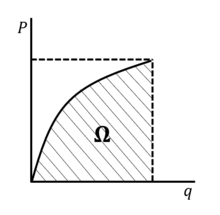The spatial dissemination of power request increments isn’t uniform all through LAC and relies on environment zone, period of building and machines, and utilization conduct contrasts of occupants. The biggest percent increments are situated in the focal inland regions with higher populace thickness in light of the more seasoned structures with maturing apparatuses and more unfortunate protection just as the higher temperatures around here. Inland locales experience the most noteworthy expansions in temperatures and ensuing Power to Choose energy use under higher RCPs, yet under low RCPs these are the regions where net investment funds could be figured out. Area explicit proficiency redesigns, particularly concerning building shell enhancements and warming and cooling hardware overhauls, could be a compelling pathway to augment energy decrease per dollar put resources into productivity program results show that most of the projected power increments can be balanced and net energy use can decay through the forceful utilization of energy-proficient innovations.

Techniques to measure energy utilization :
- Prime example improvement: In fostering the paradigms, we use three significant wellsprings of data: the Residential Appliance Saturation Survey (RASS), the LAC Assessor data set, and the California Assessors Handbook. RASS is a California-explicit machine study managed by the California Energy Commission that catches an assorted arrangement of factors on building warm properties and apparatus use.
- Adjustment: We run the reenactment group for 2011–2012 and foster custom climate documents for BEopt for LADWP climatic conditions to be equivalent with the adjustment informational collection. We align against the middle yearly private power for the LADWP administration region, totalled by CBG. Analysts at the University of California, Los Angele got this information as a component of an exploration project with the California Energy Commission
- Recreation coordinations: Using the custom climate records we produced for every one of the GCM runs, we recreate our 51 original models utilizing cluster handling for EnergyPlus. EnergyPlus is the fundamental reproduction motor for BEopt; subsequently, when we make the models, we can redo the EnergyPlus input documents and straightforwardly run them in EnergyPlus. This saves handling time and permits us to modify the reproduction yield design.
- Machines and fitting burdens: Except for lighting and fitting burdens, we expect the quantity of apparatuses used is directly corresponding to the number of abiding units. We don’t adjust the circulation of apparatuses all through the situations, just the energy utilization, except for the ‘plug burdens’ class that catches use by incidental machines in homes
- Lighting: In 2012, the lighting segment of the Energy Independence and Security Act came full circle managing the force utilization of glowing lights in the United States62. Past expanding the proficiency of glowing lights, this has driven down the expense of elective lights, for example, minimized fluorescent lighting and light-discharging diodes
- Bounce back punishment: Proficiency enhancements in homes can likewise prompt changes in energy utilization conduct, possibly counterbalancing a portion of the reserve funds from productivity. In a true application, upgrades in energy productivity in homes can prompt the bounce back impact where expected reserve funds on energy are in part counterbalanced by changes in occupant conduct. It is all around archived that adjustments of social or monetary conditions lead to changes in purchaser conduct